In this ultimate guide, discover the best things to do in Iceland in October.
Iceland is undeniably beautiful, boasting geothermal marvels, breathtaking landscapes, cascading waterfalls, the mystical Northern Lights, volcanoes, and soothing natural hot springs. Its unique blend of natural wonders sets it apart as one of Europe’s most naturally stunning destinations.
Iceland has secured a special place in my heart. It’s a captivating country, enriched not only by its stunning landscapes but also by its warm and welcoming people. Every return visit to Iceland reaffirms the genuine love and respect they extend to tourists, making it a cherished destination.
Whether you prefer self-drive tours, embark on Ring Road adventures, or seek off-the-beaten-path detours, each experience in Iceland is uniquely distinct. It offers tourists a wealth of options for crafting unforgettable vacations.
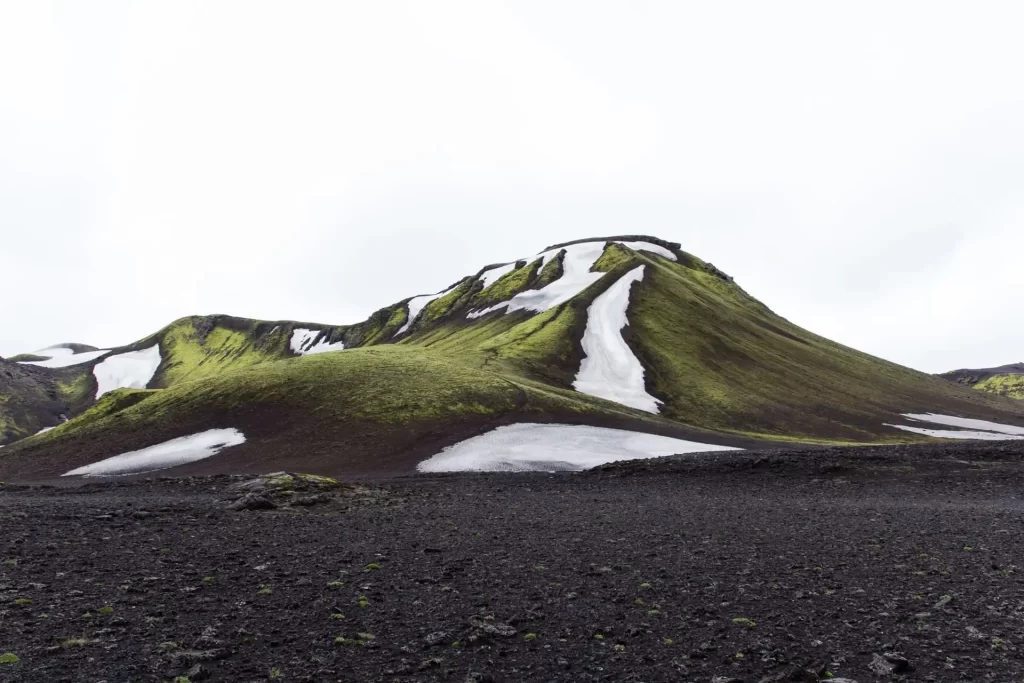
Why Visit Iceland in October?
For visitors seeking a quieter ambience with fewer crowds, the shoulder season (mid-May to mid-June) is ideal. On the flip side, if you thrive on the buzz and excitement of crowds, the peak season (June to August) beckons. Each season in Iceland offers distinct and enriching experiences.
However, I would recommend October as the prime time to visit Iceland.
October offers its unique allure. With shorter days and longer nights, it presents the perfect canvas for Northern Lights enthusiasts. However, the appeal doesn’t end with the Aurora Borealis.
As a transitional month, October provides a splendid fusion of both summer and winter experiences. While summer spans from June to August, and winter from November to February, October offers a sweet spot for experiencing the best of both worlds. It’s renowned for its evergreen tours and activities, making it the prime choice for travellers seeking a delightful crossover of seasons.
Best Things to Do in Iceland in October
To help you make the most out of your trip to Iceland in October, we’ve curated a special list of all top-rated experiences in the country. You can either add the below suggestions to your Iceland itinerary or pin them up on your bucket-list adventures.
Here’s a detailed list of all the best things to do in Iceland in October –
Explore Reykjavik
Reykjavik, Iceland’s capital, is a vibrant urban hub that stands out even among the country’s smaller towns. Its size doesn’t limit the richness of experiences it offers. Reykjavik pulsates with a lively atmosphere, thriving nightlife, exceptional culinary scenes, and great live music. A visit to Reykjavik promises to be nothing short of delightful and memorable.
Reykjavik serves as an excellent launchpad for tourists looking to embark on off-the-beaten-path adventures. The capital city regularly hosts multi-day trips and extended excursions that whisk you away to some of Iceland’s most unimaginably beautiful places.
Destinations like the Blue Lagoon, the Golden Circle, Snæfellsnes Peninsula, Vatnajökull National Park, and Lake Myvatn are conveniently close to Reykjavik, simplifying access to these breathtaking locations for travellers like us.
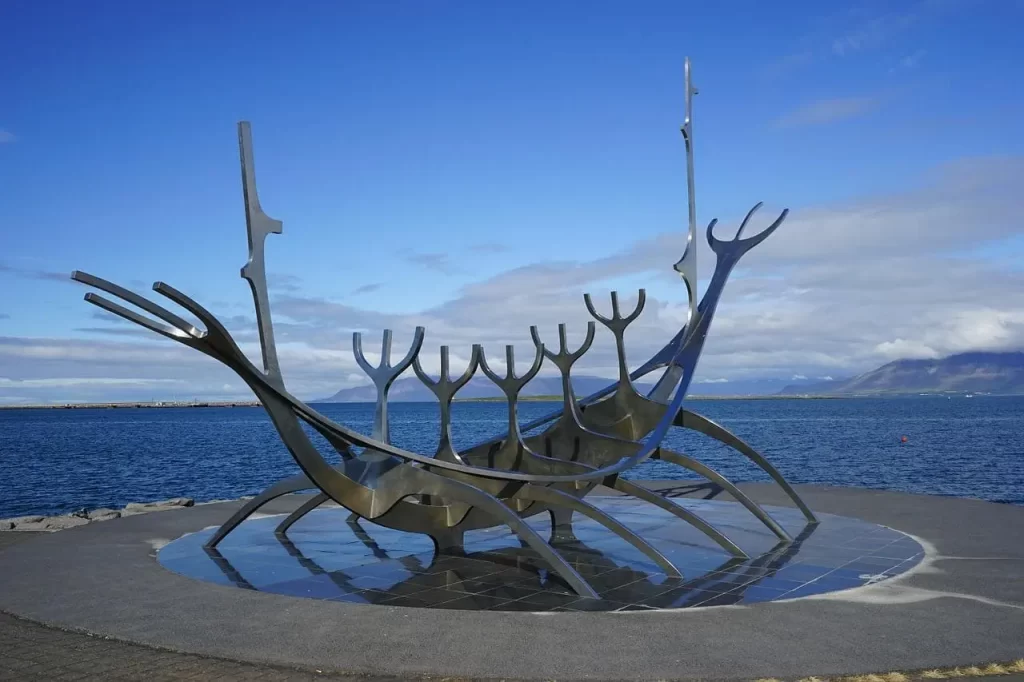
While in Reykjavik, immerse yourself in Viking history and the city’s rich past. Additionally, the presence of world-class restaurants and charming cafes makes it a must to savour exquisite Icelandic cuisine. The capital also hosts a plethora of cultural events, outdoor shows, musical performances, art exhibitions, and galleries.
Exploring these attractions in October, with fewer tourists around, is an excellent choice for a more intimate experience of the city’s vibrant culture and history. Likewise, visiting Reykjavik in October is undoubtedly the best time to experience Iceland’s chilly weather.
Visit the Golden Circle
The Golden Circle in Iceland offers the perfect introduction to exploring a multitude of natural wonders. This renowned scenic route is among the country’s most popular, guiding you past awe-inspiring waterfalls and breathtaking landscapes.
The Golden Circle is a showcase of Iceland’s prominent geothermal activity, including spas and a UNESCO World Heritage Site, making it an essential destination for any traveller.
This circular route spans 250 kilometres (186 miles) and encapsulates three of Iceland’s major attractions: the Geysir Hot Springs, Gullfoss Waterfalls, and Thingvellir (Þingvellir) National Park.
When embarking on a day trip from Reykjavik, your first stop along the way is Thingvellir National Park, one of Iceland’s three cherished national parks. This park is renowned for its remarkable geological features, which mark the meeting point of the Eurasian and North American tectonic plates. Additionally, a visit to Thingvellir offers a memorable journey through Iceland’s rich historical sites.
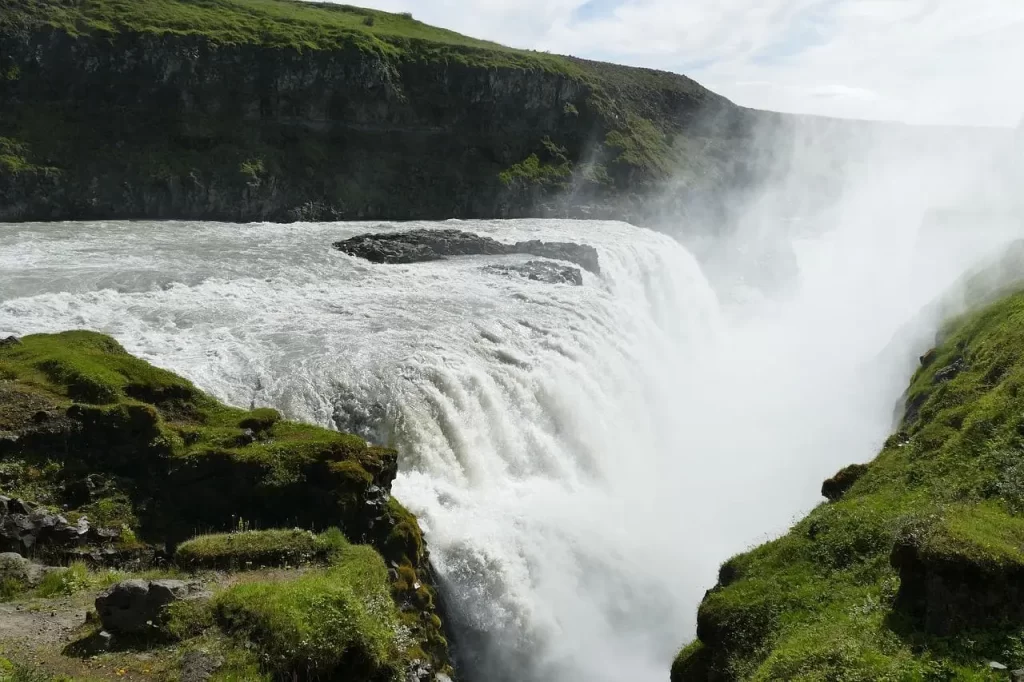
The second stop on the Golden Circle is the magnificent Gullfoss waterfall. Among all the waterfalls you’ll encounter in Iceland, Gullfoss stands as a truly majestic and breathtaking spectacle.
The water plummets from the glacial river Hvítá, descending a staggering 71 feet into a vast gorge below. One of the most unforgettable experiences is standing beside Gullfoss and experiencing the sheer force of the waterfall. Undoubtedly, it’s a sight that no tourist should miss.
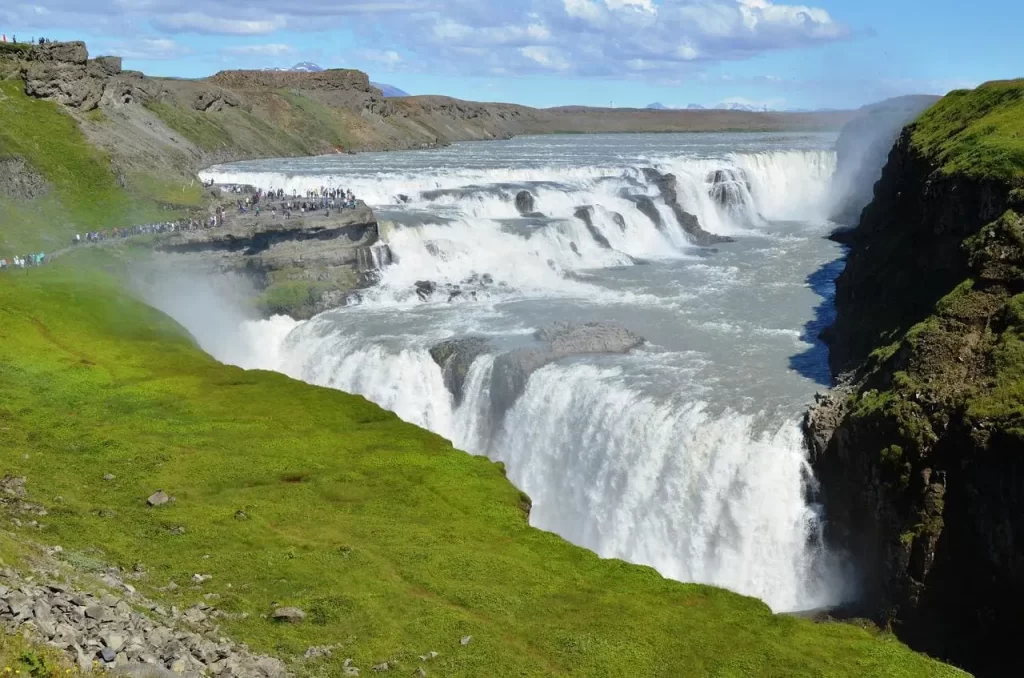
The final destination on the Golden Circle is the Geysir Hot Springs area. As the name implies, this site is a testament to Iceland’s impressive geysers, geothermal pools, and bubbling mud pits.
Currently, two geysers are active here: Strokkur and the Great Geysir, both erupting at regular intervals. Strokkur, the main attraction, puts on a show every 10 minutes. It’s an ideal place to spend quality time and witness the incredible natural forces that define Iceland in action.
If this is your first time exploring Iceland, I’d highly recommend taking a day-trip tour to the Golden Circle.
Hike the Glaciers
While many hiking trails in Iceland, especially in places like the Westfjords and the Highlands, may be closed in October due to weather conditions, glacier hiking remains a popular and exciting activity for adventurous travellers. Don’t be discouraged by the sight of fellow hikers carrying heavy gear, as it’s common for them to tackle challenging trails.
When visiting Iceland, consider exploring the hiking trails of Solheimajokull Glacier, located in the southern part of the country. It’s among the top things to do in Iceland in October and is suitable for families and all age groups. The difficulty of the hikes may vary, so beginners can find suitable options to start with.
Furthermore, you also can visit Vatnajokull National Park and explore its incredible trails. This 3-hour hike on Falljokull Glacier is their best setup, traversing across crevasses, small ridges, ice sculptures and tiny lakes.
For a detailed guide on glacier hiking in Iceland, check this page.
Go Whale Watching
Iceland is a fantastic destination for spotting giant whales, and October marks one of the last opportunities to venture out to sea in search of these magnificent creatures. Several popular whale-watching tours depart from Iceland’s harbours, offering you the best chance to get up close to humpback whales.
Many RIB whale-watching tours provide a high likelihood of encountering whales and other marine species, including dolphins, minke whales, and porpoises. It’s advisable to book your tickets in advance before arriving in Iceland to secure your spot on these exciting excursions.
Most guarantee you the success of spotting whales and other marine species like dolphins, minke whales, and porpoises. You’ll need to book the tickets before you arrive in Iceland.
Go Horse Back Riding
Horseback riding is another popular activity in Iceland in October. You don’t need to be an expert rider to enjoy this experience, as many guided tours provide beginners with the necessary training and assistance to get started. It’s a wonderful way to explore Iceland’s beautiful landscapes from a unique perspective while enjoying the company of these Icelandic horses.
Icelandic horses are indeed a special breed, known for their speed, strength, and endurance. They are well-suited for various equestrian activities, including racing over multiple laps. The locals take great pride in their horses and ensure their regular care and maintenance.
Whether you’re eager to gallop across lava fields or leisurely ride along the Black Sand Beach, horseback riding in Iceland offers a truly unique and unforgettable experience, allowing you to connect with the country’s natural beauty in a special way.
Popular Horse Back Riding Tours in Iceland –
Icelandic Horse Tour from Reykjavik – Learn to ride Icelandic horses with the help of this popular guided tour from Reykjavik.
Black Sand Beach Tour – Ride your horse through the famous Black Sand Beach of Iceland’s southern coast on this guided tour from Vik.
Note: Usually, horse ridings are clubbed with other Icelandic activities (hiking, glacial treks etc.). You can either book multi-trip tours covering the said activities or go for the individual ones (which usually last for 1-2 hours).
Wander through Snæfellsnes Peninsula
The Snæfellsnes Peninsula, often referred to as ‘Iceland in Miniature,’ is a place of striking contrasts and diverse landscapes. Here, you’ll encounter black and golden sand beaches, grazing farm cattle, dramatic rock formations, vast lava fields, volcanic craters, stunning waterfalls, and hidden caves waiting to be explored.
It’s like a miniature version of Iceland itself, offering a wealth of sights and experiences within its relatively compact boundaries.
One of the highlights of visiting the Snæfellsnes Peninsula is the charm of its picturesque villages. Many of the houses in these towns are nestled against a stunning backdrop, offering incredible views of the coastline. Furthermore, the sunset vistas over the Atlantic Ocean from the peninsula are truly unforgettable and shouldn’t be missed!
When you visit the Snæfellsnes Peninsula, make sure to include a stop near Kirkjufell Mountain in your itinerary. This mountain gained popularity after being featured in the ‘Game of Thrones’ series and has become an iconic location to visit in the Snæfellsnes Peninsula.
On the other side of Kirkjufell Peak, you’ll also find the Kirkjufellsfoss waterfall, adding to the beauty of the area. It’s a must-see spot for fans of both natural beauty and pop culture.
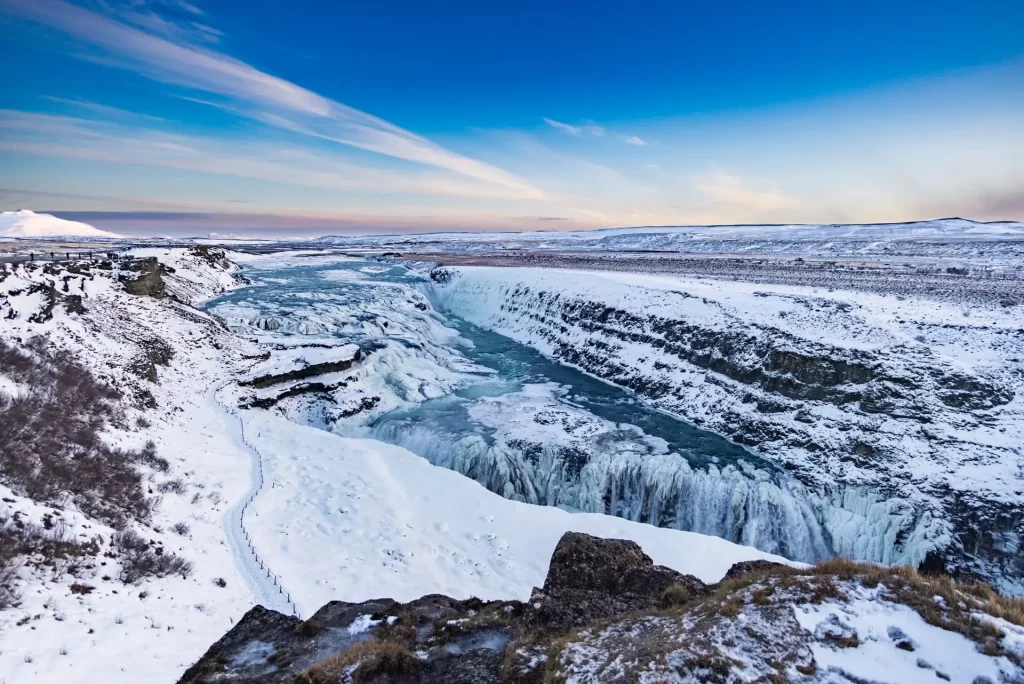
You can also plan a full-day tour covering the places mentioned above, along with Snæfellsnes National Park. Likewise, take a short detour to Hellnar – a small hamlet located on the southern coast, for more impressive viewpoints.
Hit the Blue Ice Caves
October in Iceland is the best month to explore the country’s mighty glaciers. While wandering through these glacial points, do not forget to venture into the ice caves beneath the surface. During each winter, new and unique glacial caves are formed in Iceland.
The most visited ice caves in the country are the Katla Volcano Ice Caves, renowned for providing the ultimate ice-caving experience. These caves lie beneath the famous Katla Volcano, creating a stunning natural phenomenon. Numerous guided tours offer excursions to Katla, each providing different experiences depending on the package you choose. It’s an opportunity to explore the breathtaking beauty and unique geological wonders hidden beneath the ice.
Furthermore, you can also add snowmobiling activity to your ultimate ice-caving tour. Get to experience the thrill of Icelandic activities in winter and wind through the country’s most mysterious blue cave systems.
Popular Blue Ice Cave Tours in Iceland –
Under the Volcano Tour at Katla Cave – You can opt for this tour either from Vik or Reykjavik.
Snowmobile & Ice Cave Tour – Book a combination of multi-tour activities in Iceland for a greater experience.
Crystal Ice Cave Tour – Book a super jeep ride into the bluest ice cave of Iceland.
Hike the Thorsmork Valley
As mentioned earlier, many hiking trails in Iceland close during the winter months. However, Thorsmork Valley, situated in the Highlands, remains one of the glorious paths to explore. This hiking trail seems almost too good to be true, with its lush green valleys and rugged natural beauty enveloping the entire region, making it a picturesque and rewarding destination for hikers.
The name ‘Thorsmork’ translates to ‘Valley of Thor‘ the mighty Norse god. Many visitors to Thorsmork Valley indeed feel the power and force of Icelandic nature, making it a must-try hike for all adrenaline junkies seeking a connection with the rugged and remarkable landscapes that embody the spirit of Thor himself.
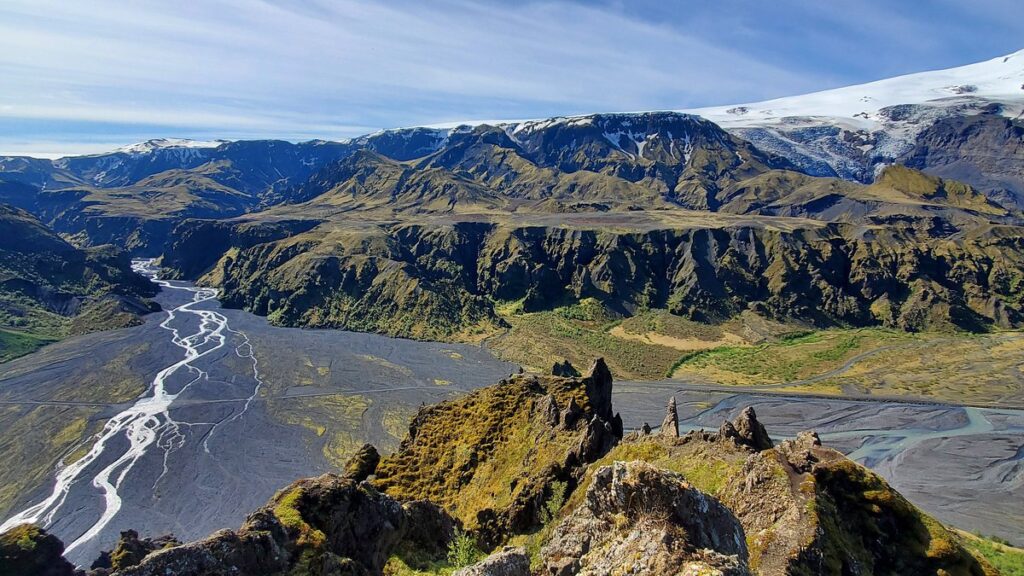
Some parts of the valley are challenging to hike, which may require a good fitness level to complete the journey. It’s best recommended to join a guided tour of the Thorsmork Valley to get a smooth overall experience.
Explore Geothermal Pools
Iceland is indeed blessed with remarkable geothermal wonders. Regardless of the day trips you undertake in the country, exploring its lagoons, volcanoes, mountains, geysers, and bubbling mud pits remains a timeless and enriching experience.
What’s even more convenient is that you don’t necessarily need to plan a specific itinerary to visit Iceland’s geothermal pools—you’re likely to encounter a few of these hidden gems during your self-drive journeys
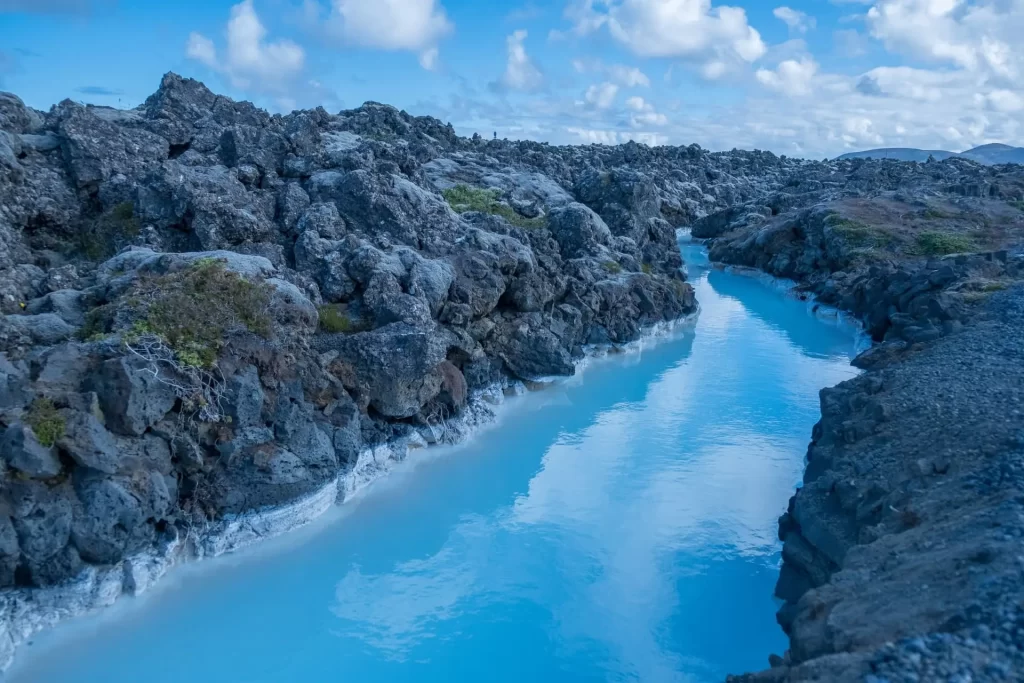
Iceland boasts over 100 swimming pools, with 17 located in its capital city, Reykjavik. The Blue Lagoon is one of its most renowned attractions and will continue to be a perennial highlight for travellers.
However, October is an excellent time to indulge in Iceland’s geothermal wonders. During this month, most of the pools and natural hot springs are less crowded, providing a tranquil and rejuvenating atmosphere for visitors to relax and unwind in the therapeutic waters.
Check this guide if you’re in Iceland, hunting for its geothermal highlights.
Experience Northern Lights
Iceland is renowned for offering some of the most spectacular viewing experiences of the mesmerizing Northern Lights, making it a once-in-a-lifetime opportunity to witness this incredible natural phenomenon. When planning a trip to Iceland, the Northern Lights often top the bucket lists of travellers.
To witness the Northern Lights at their best in Iceland, it’s essential to have dark, unpolluted nights and clear skies, as these conditions provide an ideal canvas for the enchanting dance of the aurora borealis, creating a truly magical display.
Likewise, October in Iceland is the best time to spot the Northern Lights. From the mid-week of October to April, the chances of experiencing this phenomenon are at best, giving travellers a perfect opportunity to book their Iceland trip during these months.
I would also recommend booking a guided tour of the Northern Lights to get the most out of the experience. Ideally, these tours depart from Reykjavik – taking you to different viewpoints to spot the dancing skies. If you’re not able to get a clear view, the tour guides will help you with other alternative options.
Popular Northern Lights Day Trip in Iceland in October –
Northern Lights in a Yacht Cruise – Normally, people chase the Northern Lights by car but you can differentiate your viewing experience with the help of this amazing yacht cruise tour. These tours usually depart from Reykjavik’s Old Harbor.
Relish Icelandic Cuisine
Iceland’s pristine natural environment has blessed it with the ability to produce local crops and ingredients year-round, contributing to a culinary tradition that seamlessly blends tradition with modernity. Today, visitors to Iceland can satisfy a wide range of culinary desires at world-class restaurants and cafes.
Fish, lamb, and Icelandic skyr (yoghurt) have long been staples of the local diet, and they continue to hold a special place in Icelandic cuisine. Traditional dishes such as Hangikjöt (Smoked Lamb), Kjötsúpa (Lamb Soup), Pylsur (Icelandic Hot Dog), Langoustine soup, and Flòki Whiskey (a popular drink) offer a taste of the country’s rich culinary heritage.
Iceland’s cuisine is a reflection of its unique natural resources and the creativity of its chefs, making it a delightful part of the travel experience.
Take a Southern Saga Tour
Journeying the southern coast of Iceland is one of the best things to do in October. You’ll visit some of the country’s most dramatic scenes, including glacier lagoons, waterfalls, black sand beaches, ice caps, and a stunning coastline.
To traverse through the southern coast, you’ll need to take Route I (part of Iceland’s Ring Road) to journey. An easy drive from Reykjavik will open up the country’s most significant highlights – waiting to be explored. Significantly, the short driving times between each viewpoint make it easier for travellers to spend quality time at every attraction. If you’ve got 4-5 days in Iceland, consider taking a road trip through the south coast to spend your vacation.
There are many prominent places spread throughout the southern coast to explore – but the few that remain special include exploring the Seljalandsfoss & Skógafoss waterfall, Vatnajökull National Park, Skaftafell Nature Reserve, Jökulsárlón, Reynisfjara black sand beach, and the famous Diamond Beach.
If planning to stay near the south coast, consider Vik village as your base.
Note: We curated exceptional Iceland itineraries, including a detailed schedule of ‘The Southern Tour of Iceland’. Check this guide to know everything about this road trip.
FAQs for Iceland in October Tour
Is October a good time to go to Iceland?
October is one of the best months to experience Iceland’s contrasting weather and seasonal beauty. From hiking to road-tripping, from whale-watching tours to enjoying the Northern Lights excursions, October in Iceland is truly charming!
How cold is it in Iceland in October?
October in Iceland marks the onset of winter, typically in its final days. Throughout the month, anticipate average temperatures that fall within the range of 37°F (3°C) to 45°F (7°C). It’s worth noting that October stands out as the wettest period of the year, with continuous rainfall and drizzle spanning across Iceland. Be prepared for wet conditions when exploring the country during this time.
Is the Blue Lagoon open in October?
Yes, the Blue Lagoon in Iceland is open 365 days a year. Timings and package rates may differ based on the season you travel to. The lagoon opens at 8 a.m. and closes at 9 p.m. in October.
Do you need a 4×4 in Iceland in October?
In October, when exploring the Southern Iceland region, a 4×4 vehicle is generally not necessary. However, if you plan to venture into areas like the Highlands and the Westfjords, having a 4×4 car is essential, irrespective of the prevailing climate and road conditions.
Further Readings & Resources
Hope this guide helped you to figure out the best things to do in Iceland in October. To help you with your Iceland travel plan – we’ve got some amazing related guides & itineraries curated on the destination.
Feel free to browse through the below resources –
Explore Iceland’s Itineraries – 5 Epic Road Trips (+ Iceland Ring Road Itineraries)
Iceland – Iceland in October | What to Expect & Why it is the Best Time to Visit
Discover Iceland – Guide To Iceland’s Amazing Attractions
Iceland Diaries – Guide To 3 Days In Iceland
The Blue Lagoon – The Ultimate Guide to the Blue Lagoon in Iceland
